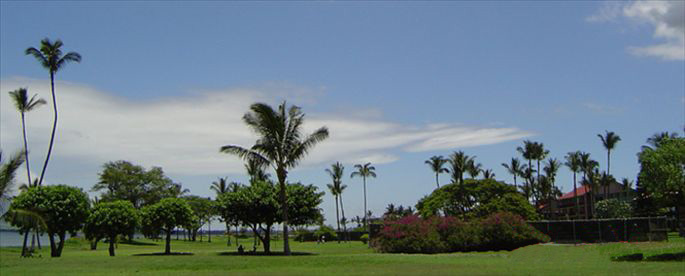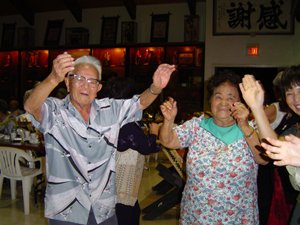|
|
|
|
|
|
 |
|
|
ハワイ・マウイ島で生きる
Japanese American
|
The Japanese-Americans are living
on Maui, Hawaii. |
|
|

Mrs. Umeno Toyama
|
|
|
「わしら よう働きましたよ」
"We worked very very hard." |
|

Mr. Hirotada Toyama |
|
|
 |
|
サトウキビ畑が広がる
ハワイ州 マウイ島
Maui, one of the island of Hawaii,
where the sugar cane fields expand.
|
|
|
19世紀末、
ハワイは砂糖産業が発展。
深刻な労働力不足に陥る。
1885年から始まった日本からの移住。
23万人がハワイへ渡った。
The sugar industry developed
in the late 19th century in Hawaii.
Then the state fall into short of labor force.
The emigration has begun
from Japan in 1885.
The twenty three thousand people
went over to Hawaii.
|
|
 |
|
|
明治時代になって
凶作でも税の軽減がなくなった。
日本の農村は
貧困に苦しんでいた。 |
|
When the period changed
from Edo to Meiji in Japan,
there was no more tax reduction,
no matter how
badly the harvest year came.
Farm villagers were suffering.
But people still had to pay the duty. |
 |
|
|
|
 |
|
江戸時代からある“出稼ぎ”が
国内から海外になった。
Since the Edo period,
there was a system of "Migrant workers"
that people followed in Japan.
Then it spread from inland to abroad. |
|
|
マウイ島に
今もある製糖工場。
Now the sugar factory
has stood on Maui. |
|
 |
|
|
|
 |
|
|
 |
|
歴史を語る錆びた煙突。
Standing tall and that smokestack
are telling us a history of the land. |
|
|
 |
|
|
“Maui Brand Sugar”は
Sugar caneからできている。
"Maui Brand Sugar"
is made from sugar canes. |
|
 |
|
|
|
|
|
|
|
故郷に錦を飾る |
|
|
It returns to their homeland in glory. |
|
|
一世と呼ばれる
日本人は
数年働いて
帰国するつもりだった。
|
|
 |
|
The Japanese people now called
"Issei" in Hawaii,
were planning to return to
Japan with the work of several years.
|
|
 |
|
炎天下の中の
長時間労働。
Long time working
under the flaming sun. |
|
|
 |
|
低賃金。
家畜小屋のような
キャンプでの生活。
Low wage.
Life at a camp.
The camp like a hovel.
|
|
|
 |
|
|
汗も、
涙も、
乾いた大地に
染み込んだ。
Their sweat and tears
sank into the dry ground.
|
|
 |
|
|
 |
|
ルナと呼ばれる現場監督者からの搾取。
お金を貯めて故郷に帰る夢も、
日本に残した家族への送金も、
一向に進まなかった。
悔しくて、
太平洋を見て何度も泣いた。
There was exploitation
from surveillance called "Luna".
A dream of returning home
and a remittance for their family in Japan.
None of both did achieve.
It's mortification.
Looking at the Pacific Ocean,
they cried again and again.
|
|
|
日本人女性との結婚を望み、
一世の多くは同郷の花嫁を呼び寄せた。
Most Issei wanted to marry
with Japanese woman
so they brought over their bride
from their homeland in Japan. |
|
 |
|
|

|
|
Umenoさんは
ハワイ生まれの日系二世。
Hirotadaさんは
先にハワイに来ていた
お父さんを頼り
19歳でマウイ島の土を踏んだ。
生まれは沖縄。
Mrs. Umeno Toyama is "Nisei".
Umeno-san was born in Hawaii.
Mr. Hirotada Toyama came to Hawaii
when he was 19 counting on
his father living ahead in Maui.
Hirotada-san was born in Okinawa, Japan. |
|
|
子供の教育も
日本人として生きた一世の証。
The education of children is one of the proofs of life as a Japanese.
No wonder we feel "Japan" from Mr. and Mrs. Toyama.
Their parents left them the Japanese spirit.
Their parents, the "Issei".
|
|
|
|
Next |
|